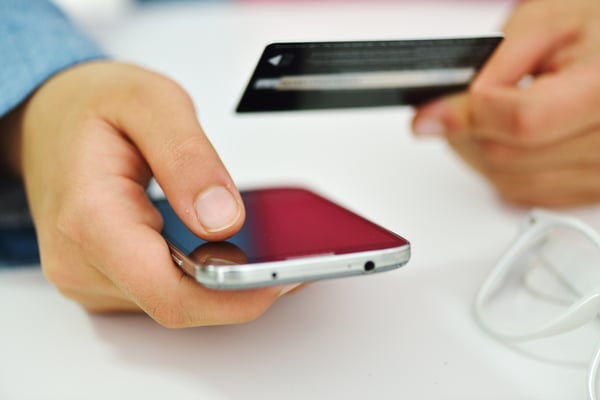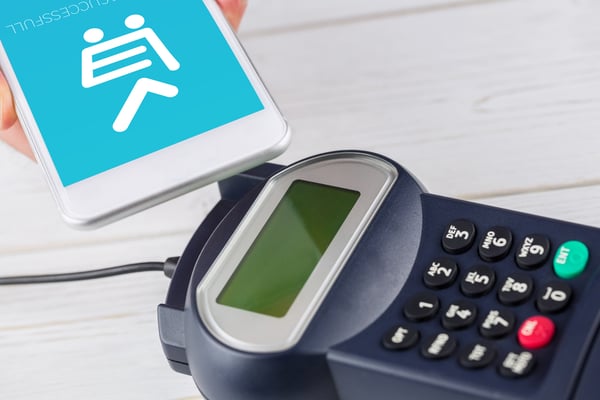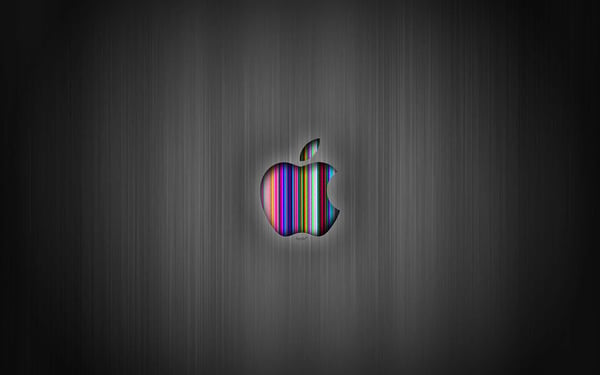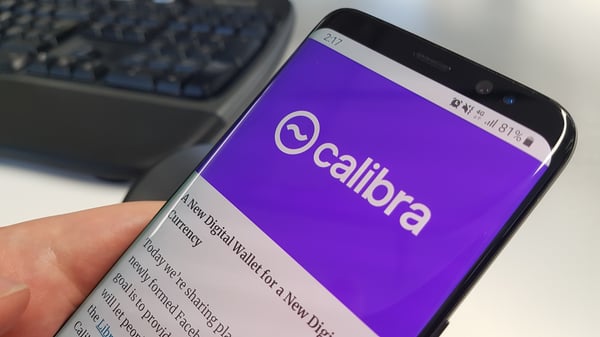“An efficient payments system provides the infrastructure needed to transfer money in low-cost and convenient ways. Efficient systems are innovative in improving the quality of services in response to changing technology and changing demand.”
- Jerome Powell, Chairman of the United States Federal Reserve
For generations, banks were the default for anyone wishing to make payments. Without a bank it was not possible to make a BACS or CHAPS payment, standing order or direct debit or indeed, going further back, to write a cheque on.
In 2020, this has changed beyond all comprehension. Competition abounds from all quarters.
We understand that in the new world of banking that revenue streams from services such as payments require protection. To complicate matters, profit from payments only comes at the margins.

As we progress through the first years of the 2020’s we will witness the rise of new technology as consumers become increasingly au fait with using not just their mobile phones but also tools such as speech for banking. These years are also likely to see the direct emergence of the big tech firms (Google, Amazon, Facebook and Apple) into the sector.
While cryptocurrencies have been touted for several years, we see only limited use for them within payments. As we will go on to explain, this is because the barrier to entry is currently set too high for most individuals – removing friction is the most effective way of gaining consumer trust.
In Part One of this article, we will look at the traditional obstacles faced by banks, before going on to look at the changes in customer's expectations. Part Two will consider the developments in developing markets such as Africa and China. In Part Three, we will study what the new technologies are and who is driving them, before finishing with a perusal of how security and crypto will be critical considerations for banks through the 2020s.
Part One1. FINTECH’S ARE INNOVATING TO MEET CONSUMER DEMAND
From a consumer's point of view, payments are an everyday part of their financial lives. The expectation is for them to be processed and executed without hindrance, at any time of day and from anywhere on the globe.
To date, however, payments have in many respects been treated more like an afterthought than a core part of their consumer proposition.
For today’s consumer, there continues to be a number of roadblocks put in the way to the successful completion of a payment request.
The first is charges. Particularly for overseas payments, costs can be prohibitive. The same applies to “same day” (CHAPS) payments, which come with a similar fee to international payments.

The second issue that customers have is the volume of time that funds take to arrive with the recipient. With faster payments, money should reach the recipient within the same business day, although this is not guaranteed. In the B2B sphere, some payments still look like a throwback to the 1970s, with paper-based invoices and weeks spent on reconciliation.
FinTech challengers are threatening to usurp this system with a range of new technologies that are focused on the end-user, offering a slick user experience and ensuring that funds arrive with the recipient when they say it will and in many cases, for a fraction of the price that the big banks charge.
Early leaders such as Paypal and TransferWise are now being joined by others who are focusing on different propositions from P2P payments to business accounts, and include Zelle, Adyen, GoCardless, Venmo, Klarna, Adyen and Square.
2. CONSUMER NEEDS AND WANTS ARE CHANGING RAPIDLY
Customers now have a plethora of choice for their everyday banking needs.This has driven a new wave of consumer consciousness, which has in turn driven down traditional brand loyalty.
The range of options has predominantly been driven by the rise of new banking technology, including banking apps, Challenger banks, Open Banking and the ease and speed of account switching.
Bank customers, mainly those younger in years, urban and with less need for physical cash, are far more likely to conduct their financial lives through the use of mobile apps. The growth in the use of financial apps, in part, is due to the ease and efficiencies gained from managing transactions on mobile.
This has naturally played well with the new Challenger banks, as well as the digital spin-offs from the incumbent banks, who have more holistic and user-friendly banking apps.
The simplicity of switching accounts, together with the variety of options available, has resulted in a decrease in customer loyalty. Customers are, more than ever, willing to switch accounts products or services to those who have the best rates or fit in best to their lifestyle needs.
And lifestyle is an essential factor here. While high-street banks have worked hard to update their digital presence and mobile apps, it is often not just the efficiency of the app, but the associated experience that is important. When we consider the offerings of new contenders such as Monzo, Starling or Revolut,it is clear they offer much more than an app and associated accounts.

Within the confines of finance apps, we have witnessed the introduction of app marketplaces and hacks that help with lifestyle such as spending updates or blocks on payments to certain websites (such as gambling).
Challenger banks also only exist in the digital sphere. They have no branches. As well as reducing overheads, this fits into the lifestyle that younger “on the go” consumers demand – the ability to check balances, buy services and make payments from anywhere on the globe at any time of the day.
Part Two3. WHERE CAN WE FIND INSPIRATION OF TECH ALREADY IN ACTION?
In our search for future predictions, it is wise to consider existing technologies that have not impacted the UK, or western hemisphere. Many examples can be found from emerging nations that have made remarkable advances in areas in which more developed countries continue to struggle. For instance, in Africa, sending payments to the unbanked has been, to an extent, resolved, while in China, payments are free of friction courtesy of QR codes.
Throughout the course of the last decade, some of the most far-reaching advancements in payments have been made in African states. Encapsulating large populations, much of it rural, without access to bank branches or banking facilities, a customer-centric, cheap and straightforward form of payments has emerged.
This has been based primarily on the use of mobile phones and dominated by players such as M-Pesa. Set up by mobile operator Vodafone, the company has seen immense growth rates based on the ubiquity of the mobile phone.
The innovation and use-cases that have emerged from the prevalence of M-Pesa are quoted on the Vodafone website, and worth repeating at length:
“M-PESA has proved that the most basic mobile phone can be turned into a lifeline; a device that can keep you connected in more ways than we ever thought possible just over a decade ago. Increased mobile money transactions have brought the need of more innovation in M-PESA. We have partnered with a range of organisations to come up with innovative solutions to their challenges.
In Tanzania for example, where the cost of travel prevents many people from getting the medical care they need, one non-governmental organisation (NGO), Comprehensive Community Based Rehabilitation, has used M-Pesa to send patients the money to pay for their travel to its hospital.
In DRC, G4S struggled to pay its security staff who were spread around the country. Local supervisors would head to remote areas to pay staff with cash face-to-face, which was a huge security risk to them and their employees. M-Pesa allowed G4S to pay its staff in bulk, directly to their mobile phones in an instant.”
The M-Pesa example highlights how customer-centricity – offering a simple way to make payments using something possessed by virtually every adult, for a low fee - has become the dominant method of sending money.

4. COULD WESTERN GOVERNMENTS FOLLOW THE CHINESE?
As we covered in detail last year, payments in China have become dominated in their entirety by Alipay and WeChat Pay through the use of QR codes.
QR Codes are a direct competitor to NFC (Near Field Communications) on which most western mobile wallets are based. Mobile phones read a QR code on a product, similar to a barcode to instruct the payment. QR codes have the advantage of bypassing most of the traditional payment rails that are required to make a payment, such as a physical card, payment networks and terminals. Indeed, QR codes are basic enough in their use, that anyone can generate one.
The popularity of QR codes and particularly of the two major providers has meant that cash has all but disappeared within China. QR codes have also displaced cards completely.
This perhaps is a portent of things to come in western states. Already we have seen cards overtake cash as the most popular method of payments, while use of mobile wallets grows.
We consider it hugely unlikely that cash will disappear within the UK – if nothing else because Government policy will ensure that it is kept in circulation. However, its use will continue to decline through the next decade, most likely confined to rural and elderly populations.
Mobile wallets will continue to grow in popularity. While they are effective at reducing friction for POS sales, they are more restrictive for online purchases. Currently, consumers have only a minimal number of checkout options when shopping online, perhaps a card or Paypal. For them to become a true competitor to the physical card, options such as Google or Apple Pay must become ubiquitous at checkout.

Part Three5. ON THE NEED FOR INVISIBLE PAYMENTS
Of late, we have increasingly heard a strong argument be put forward for payments; rather than needing to be faster or more automated, should become “invisible”.
That is payments that do not require a physical card to be present for the purchase to be made, or can be made without any input from the purchaser.
Making payments invisible is a progressive step as it reduces friction in the purchasing process. Looking at examples such as cart abandonment – a common problem for online retailers – making the purchase experience frictionless can generate more sales.
In short, consumers consistently look for optimum convenience in their lives. Contactless is more convenient than chip and pin and so has usurped it. The removal of physical cards from all payments, then, whether physical or online, will offer consumers more convenience.
Speaking to American Banker recently, Alan McIntyre, Senior MD at Accenture said of invisible payments:
“Whether it is tapping a ring that you wear or facial recognition, the payment will become more seamless. The idea of taking the card out of the wallet will seem archaic. What you think of as transactional banking will disappear.”
6. COULD WEARABLES BE THE ANSWER?
Already we have seen wearables such as smartwatches that have in-built NFC technology come to market. Wearables have yet to have an impact upon the sector, and our reading of this suggests it is unlikely to become a significant factor in most consumers thinking. This is due to the payment still being visible; it is only a small jump from using a card or phone, to using a watch or other device at a POS.
And this is why we see much more future for retailers that can make payments completely invisible. An example of this in action is Amazon Go stores. In these Amazon retail outlets, consumers are free to select the items they wish, and then have their Amazon accounts charged for the purchase. Amazonstates that ‘Go’ stores utilise “the same types of technologies used in driverless cars: computer vision, sensor fusion, and deep learning algorithms” to understand purchases made and to bill the correct account. Allied with an increasing use of biometrics, this will see a vast reduction in the reliance of cards – as we have seen with cash through the past decade.

7. FURTHER EMERGING TECH - DISTRIBUTED LEDGER TECH
Tech will increasingly emerge that will change the way that we think about payments. One example is Distributed Ledger Technology (DLT), on which blockchain is built.
Blockchain can generate real-time verification of transactions. This negates the need for clearing houses and will allow for the swift settlement of transactions, in most cases in seconds. With activity recorded on the blockchain, security is enhanced, giving reassurance to both purchaser and vendor.
Across the globe, the average price for cross-border settlements stands at 6.84% (down a quarter percent on twelve months previous) according to World Bank figures, and blockchain can significantly reduce this, almost to zero.
8. HAS THE TIME COME FOR AI & RPA?
There is no shortage of articles predicting what AI will achieve within the next ten years, and we concur, that it will become a potent force within the financial sector.
Of course, AI will, and is already,used within a plethora of applications, of which payments is one example. In line with moving payments to make them invisible, AI will make payments more secure, reduce fraud and screen for sanctions.
In a similar vein, the undertaking of back-office functions such as AML and KYC checks using Robotic Process Automation (RPA) is already commonplace.
It could be that as we move through the decade, a combination of RPA and AI will become the norm in apps such as Alexa or Siri, allowing payments to be made intuitively, with minimal input from the user.
9. THE TECH GIANTS ARE FINDING THEIR FEET. QUICKLY.
Naturally, any post on the future of financial services isn’t complete without discussion of the big tech firms, predominantly the GAFA firms of Google, Amazon, Facebook and Apple.
We have covered their entrance into financial services in previous posts, but suffice it to say, their potential impact upon the payments sector is tremendous. The big tech companies have significant interests in many of the aspects that we have discussed above, including social media, AI and wearables. In some jurisdictions, they have moved into customer-facing banking propositions also, such as Apple’s credit card launched in partnership with Goldman Sachs.

It is, however, their payment capabilities that interest us here. We earlier considered digital wallets and Amazon Go retail experiences. Should an Apple succeed in making a mobile wallet that makes payments invisible, or Amazon replicates its Amazon Go store into the online world, then they may yet become a considerable player in the payment's world. Similarly, should WhatsApp Pay prove to be a hit in India, then successfully rolled out to the rest of the world, they also could be a prime contender to dominate the payments market.
Part Four10. WHEN WILL WE FEEL SECURE WHILE BANKING?
Security will, of course, be of paramount importance for the industry as we see today. Cyberfraud and hacking continue to grow in both prevalence and value of lost resource. What we have learned over the last decade is that no one is safe from being hacked or defrauded, from single individuals to business, to multinationals, to governments, all have suffered from this threat.
Two-factor authentication (2FA) using biometrics can help individual consumers. 2FA resolves the pain of password identification. Biometrics such as fingerprint or iris scans will add a new layer of security into the payments process. As we examined above, blockchain technology and AI can also play a significant part in ensuring the integrity of payments into the next decade.
As the decade progresses, we foresee a rise in the uses and ubiquity of biometrics as a positive form of ID for payments both in the physical and digital world. Already smartphones can capture fingerprints, and we have seen recent examples such as NatWesttrialling the use of fingerprints instead of pin numbers for debit card transactions.
Vocal recognition, also, is set to become mainstream through the 2020s. Some banks already offer this as a valid log-in for telephone banking. HSBC, an early adopter of vocal recognition state on their website:
“Fraudsters and hackers may be able to steal or guess your security number, but they can't replicate your voice. Voice ID is sensitive enough to detect if someone is impersonating you or playing a recording. It can even recognise your voice if you have a cold or a sore throat.
You won't need to remember your security number. Once you've entered your account or card number, you'll just need your voice to access your account through telephone banking. This should make using telephone banking much easier, particularly if you don't call us often.”
We believe that vocal recognition may become prominent when using your phone – such as phoning a bank – bit will have limited use in the online and physical world, where biometrics such as fingerprints and ultimately iris scans will become the serious force.
11. HAS THE TIME COME FOR CRYPTO TO MAKE AN IMPACT?
For many, it will feel that we are no further forward with crypto than where we were at the start of the decade. Yes, there are many more coins in circulation, and prices, at times, have surged.There has, however, only been limited examples of crypto becoming a leading player in the payments market.
There has been one potentially game-changing announcement in the field – the creation of the Libra association tasked with creating the new digital coin, Calibra. The news, essentially from Facebook, towards the end of 2019 came with much fanfare, but to date, has produced nothing beyond scepticism from national governments, and some rancour amongst Libra members.

To highlight how Libra (and for that matter other coins) could change the face of payments, we referred to the Libra website:
“Libra is a global, digitally native, reserve-backed cryptocurrency built on the foundation of blockchain technology. People will be able to send, receive, spend, and secure their money, enabling a more inclusive global financial system.”
David Marcus, Head of Calibra at Facebook, said:
“Libra holds the potential to provide billions of people around the world with access to a more inclusive, more open financial ecosystem.”
Could Libra be the currency that takes crypto into the mainstream? Given its initial teething issues, and a somewhat vague policy statement that is already being satiated by existing technologies, it is difficult to place its role in the economy of the 2020s. Given its birth out of Facebook, it may be that Libra becomes the default payment setting on WhatsApp and Messenger. This, however, risks putting barriers in the way to consumers looking to make payments, when, as we have discussed, removing friction is very much the aim of the game.
To date, digital currencies such as Bitcoin and Ethereum have stayed very much on the periphery of the payments sector. Not being pegged to a currency (though Libra has suggested it will be pegged to a basket of currencies) digital coins have seen wild fluctuations in price. These price fluctuations have limited their use to a small sub-set of tech enthusiasts. While we envisage a steady uptick in the volume of individuals using crypto and in locations where it is accepted, we do not see a cryptocurrency breaking out as a dominant payment method through the 2020s.
Where it may be used in a more minimalist manner is in payments within social media. With Libra already blazing a trail in this direction, it may well carve out opportunities for other digital currencies within the social media sphere.
CONCLUSION
When thrown together, the competing visions and companies that are vying to dominate the $100 trillion global industry represent a pea soup of different technologies – many of which look very different to what is available to consumers to use today.
In many respects though, it is the consumer that has driven many of these changes. Their demand for experiences in place of transactions, and lack of brand loyalty to financial institutions, has given birth to many of the technologies that we reference.
As we discussed at the top of the article, those that will see the most success are those that break down barriers, making payments as seamless and “invisible” as possible, while also guaranteeing user safety and security.
At the same time, payments through the decade will at once feel very similar to how they do now, while at the same time, having been significantly changed.
It is hugely likely that the underlying structures supporting the payments industry will have changed dramatically. This change in structure could involve the use of blockchain for instant payments, or using biometrics for security, as examples. To the casual observer, this is unlikely to be noticed.
The impacts, however, are sure to be huge. Overseas payments made instantly. Two-factor authentication carried out on all payments ensuring security is upheld. Reductions in fraud as AI assistants monitor payments made. All are sure to reduce fees, increase convenience and hasten the speed of payments.
One of the major themes that we have carried through this paper is the need for the industry to make payments invisible – offering as it does, the most obvious route to customer adoption. Making the payment invisible can be generated through a variety of different technologies, whether it be QR codes, biometrics or wearables.
The security of all payments will continue to be a dominant theme as we move through this decade. The rise in fraud and cyber-criminality was a prominent theme during the last ten years, and the industry must now show that it can respond. Two-factor authentication has been provisionally delayed, and we look forward to its eventual roll-out. Similarly, the need for biometric security continues to grow, and we look forward to mainstream use-cases for fingerprint and iris scan identification. We consider that outwith of a few niche industries that cryptocurrencies will not break into the mainstream.
While we have here endeavoured to encapsulate what payments will look like in the future, it is also possible that much of the technology that we will be enjoying in 2030 is already here. For those that do not mourn the loss of cash, China is having terrific success using QR codes, which has already reached European shores. The use of mobile apps to make P2P payments also is incredibly simple.








